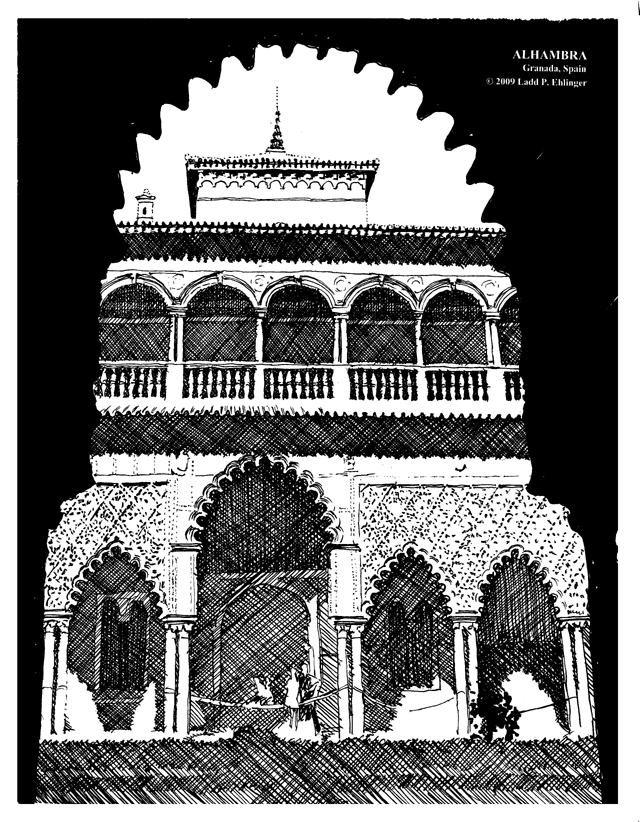
Projects Newsletters Personnel Contact

The Alhambra was a fortified palace with a complex of buildings set on the highest hill in the city of Granada, Spain. It was the last and finest Moorish palace of the Islamist empire that ruled Spain from 710 AD until 1492 AD. It was built between 1338 AD and 1390 AD by the Nasrid dynasty after their power was on the decline. But it flourished for over a century as a grand finale. In fact, Granada was the last city to fall to the army of King Ferdinand and Queen Isabella when the Moors were finally driven out of Spain in 1492. Remember that two other events also marked 1492 and the reign of Ferdinand & Isabella: the financing of Columbus and his discovery of America, and the expulsion of the Jews and the Moors from Spain under an edict which commanded that they should “convert, leave or die.”
The Alhambra was built of more temporal materials than most Moorish palaces. Wood and stucco comprise the majority of the structure and decoration. The stucco is richly carved in a technique we have discussed in previous newsletters - mudéjar - an intricate and elaborate arabesque interlacing and weaving of patterns.
This issue’s limited edition print of a sketch by Ladd P. Ehlinger, AIA is of the facade of the Patio de los Leones (Courtyard of the Lions). Two other patios comprised the organizing scheme of the Alhambra: the Patio de Cuarto Dorado Courtyard of the Golden Room), and the Patio de los Arayanes (Courtyard of the Myrtles). All buildings faced one of these patios and were accessed through them and to each other through narrow passageways. The Patio de los Leones was punctuated with a fountain in the center and was the seat of the government and also contained the Hall of Justice as well as the court itself in the Sala de los Reyes (Chamber of the King).
The Patio de los Leones is arcaded at the perimeter, with a filigree wall of mudéjar stucco above and then topped with another arcade. Blocks with entrances to important spaces accent the facade. Inside in the Hall of Justice are more displays of elaborate stalactite stucco ceiling work with the mudéjar walls.
Successor Spanish kings did little to enhance the Alhambra. The worst was the Palace of Carlos V built in 1526 in the Spanish Renaissance style. It is a fine Renaissance building, but it clashes with the Alhambra aesthetically and crowds it spatially. It simply doesn’t belong there.